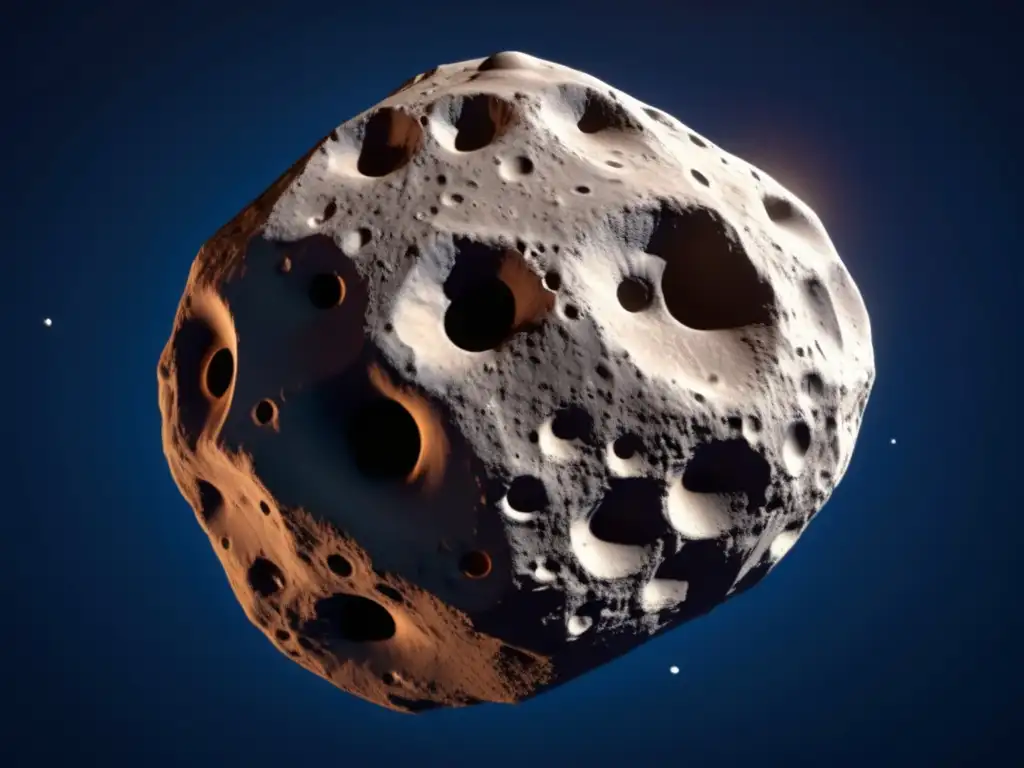Asteroid Orpheus: A Detailed Analysis

Introduction
Welcome to Asteroid Realm, your go-to source for all things asteroid-related. In this article, we will delve into the fascinating world of Asteroid Orpheus and provide you with a comprehensive analysis of its characteristics and significance.
Orbit and Physical Characteristics

Orbit
Asteroid Orpheus, discovered on April 24, 1960, by C. J. van Houten and I. van Houten-Groeneveld, is classified as a potentially hazardous asteroid (PHA) due to its proximity to Earth's orbit. It follows an elongated orbit around the Sun, with a semi-major axis of approximately 1.89 astronomical units (AU) and an eccentricity of 0.327.
Physical Characteristics
Asteroid Orpheus has an estimated diameter of about 6 kilometers, making it a relatively large object. Its albedo, which measures the reflectivity of the surface, is estimated to be around 0.08, indicating that it has a dark and low-reflectivity surface. Spectral analysis suggests that Orpheus belongs to the C-type asteroid group, which consists of carbonaceous asteroids rich in carbon compounds.
Composition and Structure

Composition
Studies of Asteroid Orpheus have revealed that it primarily consists of various silicate minerals, such as pyroxene and olivine. Additionally, it contains significant amounts of organic compounds, including hydrocarbons and amino acids. These findings make Orpheus a valuable target for future space missions aimed at studying the origin and evolution of life in the solar system.
Structure
Based on radar observations, Asteroid Orpheus is believed to have a non-spherical shape, possibly resembling an irregularly shaped potato. Its surface features include impact craters, some of which are several kilometers in diameter. These craters provide valuable insights into the collisional history of the asteroid and the processes that have shaped its surface over billions of years.
Origin and Significance

Origin
Asteroid Orpheus is believed to have originated from the inner regions of the asteroid belt located between Mars and Jupiter. The gravitational interactions with other asteroids and the influence of Jupiter's gravity might have caused its current orbit to bring it closer to Earth.
Significance
Studying asteroids like Orpheus is crucial for better understanding the formation and dynamics of our solar system. By analyzing their compositions, scientists can gain insights into the building blocks of planets and the conditions necessary for life to arise. Additionally, studying potentially hazardous asteroids like Orpheus allows us to develop strategies for planetary defense against potential future impacts.
Frequently Asked Questions

-
What is the size of Asteroid Orpheus?
Asteroid Orpheus has an estimated diameter of about 6 kilometers.
-
What is the orbit of Asteroid Orpheus?
Asteroid Orpheus follows an elongated orbit around the Sun, with a semi-major axis of approximately 1.89 AU and an eccentricity of 0.327.
-
What is the composition of Asteroid Orpheus?
Asteroid Orpheus primarily consists of silicate minerals such as pyroxene and olivine, along with organic compounds including hydrocarbons and amino acids.
-
Why is studying Asteroid Orpheus important?
Studying Asteroid Orpheus helps scientists understand the formation and dynamics of our solar system, the building blocks of planets, and the potential for life elsewhere. It also aids in developing strategies for planetary defense against potential impacts.
-
Is Asteroid Orpheus a potentially hazardous asteroid?
Yes, Asteroid Orpheus is classified as a potentially hazardous asteroid due to its proximity to Earth's orbit.
Conclusion
Asteroid Orpheus offers an intriguing glimpse into the mysteries and complexities of our solar system. Its unique characteristics and potential for scientific exploration make it a valuable object of study. By further investigating its composition and structure, we may uncover invaluable insights into the origins of life and the dynamics of asteroids. We hope this detailed analysis has provided you with a deeper understanding of Asteroid Orpheus and its significance. Don't forget to share your thoughts and engage with the Asteroid Realm community by subscribing, sharing this article, or leaving a comment below. Thank you for joining us on this cosmic journey!
Additional Resources

If you want to delve deeper into the topic of asteroids, here are some additional resources worth exploring:
- NASA Asteroid Website
- International Astronomical Union - Asteroids
- NASA's Solar System Exploration - Asteroids
 Exploring The Unique Features Of Asteroid Daedalus
Exploring The Unique Features Of Asteroid Daedalus Understanding The Characteristics Of Asteroid Icarus
Understanding The Characteristics Of Asteroid Icarus Asteroid Teucer: A Fascinating Space Rock
Asteroid Teucer: A Fascinating Space RockIf you want to discover more articles similar to Asteroid Orpheus: A Detailed Analysis, you can visit the Asteroid Profiles category.
Leave a Reply

Articulos relacionados: